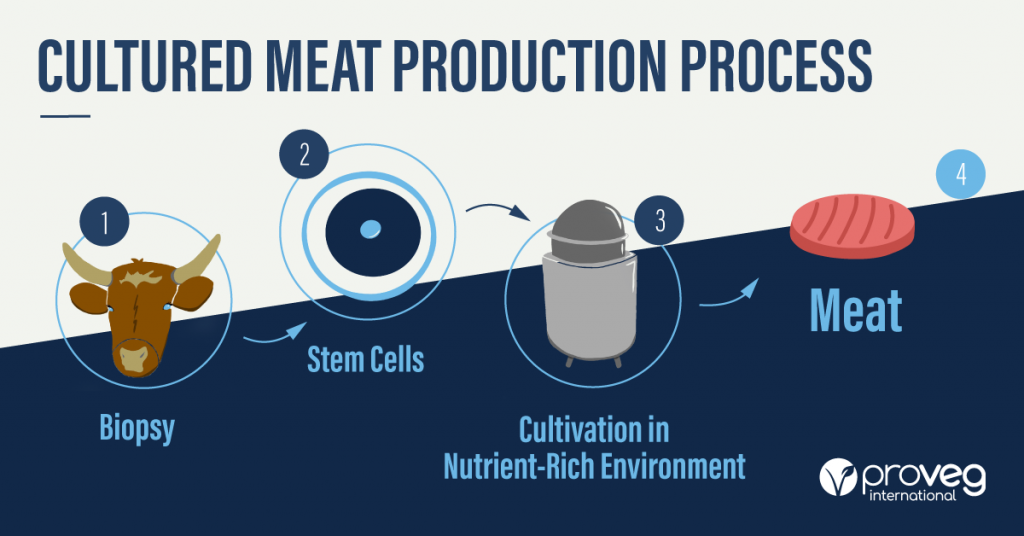Cultivated meat, cellular agriculture, bioreactors, and culture mediums… Since Dutch scientist Mark Post unveiled the world’s first cell-based burger in 2013, this sector of the food industry has blown up. And so have the number of terms attached to it. Even the base term, cultured-, cultivated-, cell-based-, varies depending on who you are talking to.
To date, we’ve counted over 75 companies worldwide that are working on producing cultured meat products, and $800 million worth of investment in this space. At the end of 2020, Eat Just made the world’s first sale of a cultured meat product in Singapore. The Eat Just chicken bites are a hybrid mix of cultured and plant-based ingredients. This combination will likely be the basis of the majority of the first generation of cultured products.
There is no denying that cell-based meat is a juicy topic. However, if you are relatively new to it, it can be tricky to make sense of. In this guide, we’ll explain exactly what it is, and define the most useful terms to help you navigate this topic with confidence.
First up, what is cultured meat?
Cultured meat, also known as cultivated or cell-based, is genuine animal meat (including seafood) that is produced from animal cells, rather than from whole, live animals. It is made from the same types of cells and has the same structure as animal tissues. Therefore it is successful in replicating the experience of eating conventional meat.
Using this method of production eliminates the need to raise and slaughter farm animals for food. There are also numerous human health benefits and a reduced impact on the environment.



